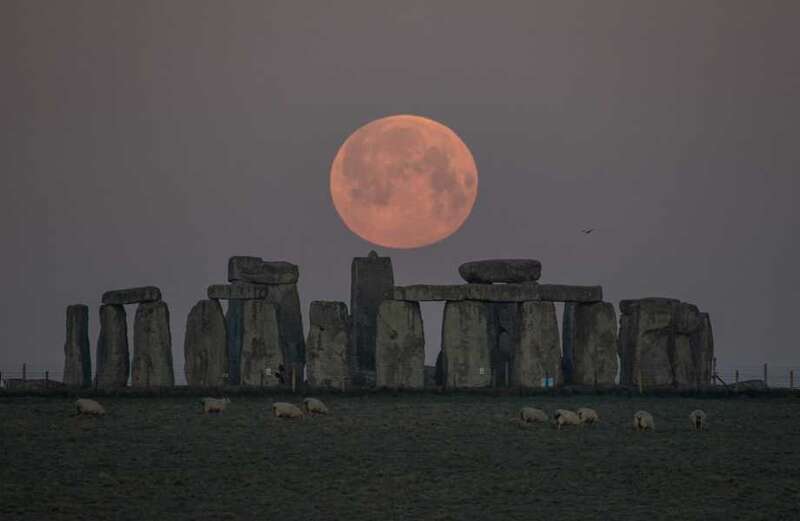SKYGAZERS around the world will be treated to a celestial spectacle as a rare "lunar standstill" will take place tonight.
For the first time in almost two decades, the moon will periodically rise and set at its most extreme points, offering some of the most stunning lunar sights.



This natural phenomenon, known as a "major lunar standstill," occurs only once every 18.6 years and lasts around two years.
It is already taking place and it's in its full glory during full moons.
During this time, the moon's path in the sky will be more extreme than usual as it will travel higher in the sky and dip lower, reaching the farthest points north and south.
 Schools at risk of closing as teachers prepare to vote on joining strike chaos
Schools at risk of closing as teachers prepare to vote on joining strike chaos
This means if you watch where the moon comes up and goes down on the horizon, you’ll see it in places you’re not used to.
Normally, the moon's declination - how far it moves north or south of the equator - changes.
During a major lunar standstill, it reaches its maximum range, moving between about 28.6 degrees north and 28.6 degrees south.
In some places, the moon will stay visible for longer periods at night because it’s higher in the sky.
These effects are due to the tilt of the moon's orbit around the Earth, which is influenced by the gravitational pull of the Sun and Earth’s equator.
When a major lunar standstill occurs, it emphasises these tilts, making the moon’s movements more pronounced and noticeable.
Tonight's full moon is set to give some extreme views of the lunar phenomenon as it will rise and set at its most southern points and travel very low across the sky.
The current major lunar standstill is said to peak next January but it can be seen in other six dates this year.
Archaeologists will be watching how the moon appears over Stonehenge tonight as the historic site has a recognised connection to the sun.
Researchers such as Fabio Silva from Bournemouth University will now investigate if Stonehenge has a link to the moon.
 Guardiola picks side on BODY LANGUAGE as he tells Foden why he’s been on bench
Guardiola picks side on BODY LANGUAGE as he tells Foden why he’s been on bench
They have been studying the moon's extremes from Stonehenge, but Silva says the weather has frequently interfered.
Tonight's full moon will therefore mark the project's next major opportunity.
He told Smithsonian Magazine: “We’ve had opportunities twice [a] month since February, but we’ve only managed to observe it three times because of the weather.
"If we do manage to observe it [on Friday], we are interested in recording where and when it will first appear, how it will be framed by the stone circle as it moves across the sky and assess whether the alignment of Station Stones and major standstill moon was intentional or merely a coincidence.”
WHEN TO SEE THE LUNAR STANDSTILL
The major lunar standstill isn't something that happens on a single day, but happens over a period of time.
We last saw a major standstill in 2006.
The next one begins in 2024 with the Moon's declination becoming more extreme.
Those wanting stunning views of the sky can watch a live stream of the southernmost moonrise at Stonehenge.
For keen skywatchers, the standstill is expected to be most extreme in late 2024 through to early 2025.
The best time to see the effects of the standstill will be around the equinoxes in September 2024 and March 2025.
The equinoxes are when the lengths of days and nights are roughly equal.
If you regularly watch the Moon from the same location, you should see significant changes in how it appears to move across the sky over the weeks and months.
The upcoming equinoxes are expected to be on September 22, 2024 and March 20, 2025.


































